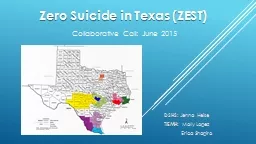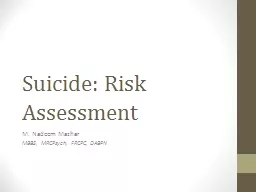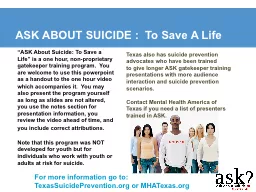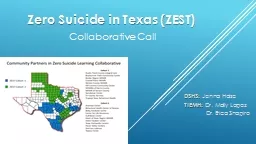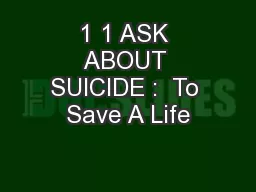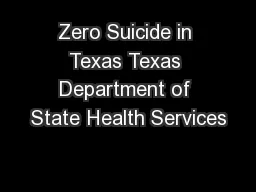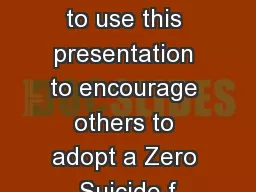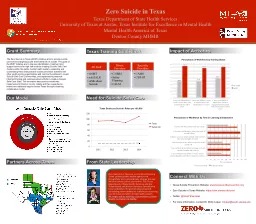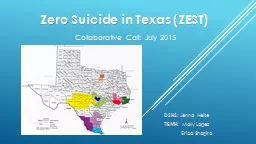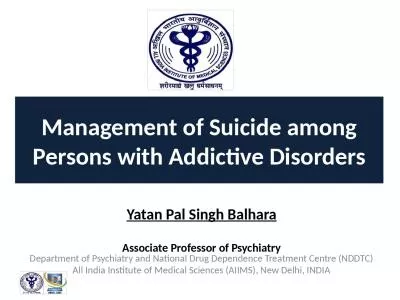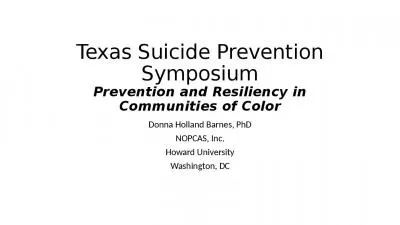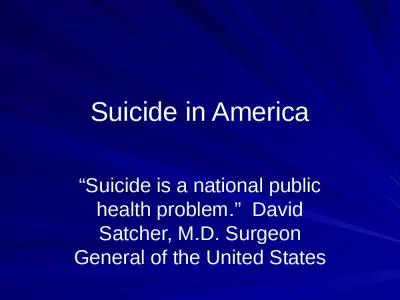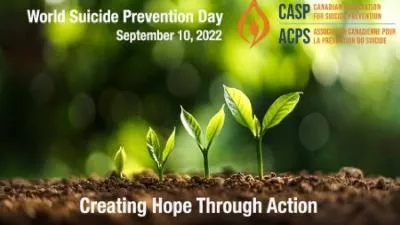PPT-Zero Suicide in Texas (ZEST)
Author : debby-jeon | Published Date : 2019-02-01
Collaborative Call June 2015 DSHS Jenna Heise TIEMH Molly Lopez Erica Shapiro Six slots for audiotape submissions on the 15 th of each month beginning this month
Presentation Embed Code
Download Presentation
Download Presentation The PPT/PDF document "Zero Suicide in Texas (ZEST)" is the property of its rightful owner. Permission is granted to download and print the materials on this website for personal, non-commercial use only, and to display it on your personal computer provided you do not modify the materials and that you retain all copyright notices contained in the materials. By downloading content from our website, you accept the terms of this agreement.
Zero Suicide in Texas (ZEST): Transcript
Download Rules Of Document
"Zero Suicide in Texas (ZEST)"The content belongs to its owner. You may download and print it for personal use, without modification, and keep all copyright notices. By downloading, you agree to these terms.
Related Documents

